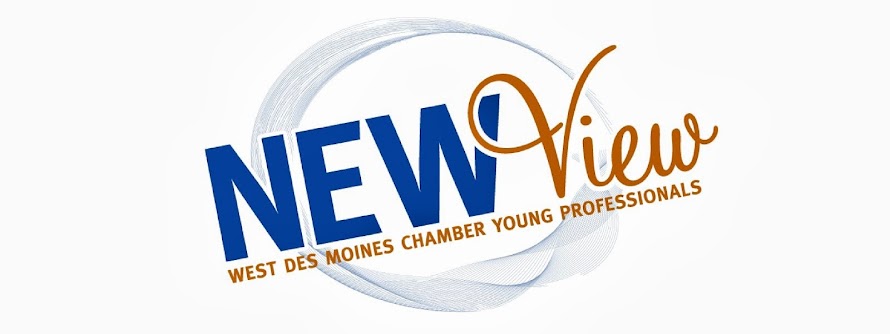 |
| Alex Taylor Associate Director University of Iowa Tippie School of Management |
I recently enjoyed a couple of great reads about leadership functions and styles that served as a catalyst for some introspection: What are the functions of a leader and how do they perform them?
In his book, “A Force for Change: How Leadership Differs from Management,” John Kotter lists three primary functions of a leader:
1 Strategy — A leader establishes direction by paying attention to the market — industry, customers and employees — then develops, plans and implements the mission, vision and strategies for the long term success of the organization.
2 Communications — A leader aligns people and resources by sharing and communicating the organizational plans and strategies so that employees, customers and partners understand, embrace and commit to these goals.
3 People management — A leader motivates and inspires by appealing to and tapping into emotional and rational values and needs of employees, customers and others to work toward shared goals and collaborative results.
So if these are the leadership functions, what are the styles?
John Hendry, author of “Between Enterprise and Ethics: Business and Management in a Bi-Moral Society,” identifies four leadership styles — authoritative, participative, empowering and servant — as they might pertain to Kotter’s functions of a leader.
Authoritative leaders cut through or eliminates red tape, process and politics to make definitive decisions. Their conviction and confidence can inspire others to follow and/or do as their told.
Authoritarian leaders sometimes convey a “my way or the highway mentality”, which can backfire when employees don’t believe their input matters or their voices are heard.
Participative leaders enable others to provide input, but remain the final decision-makers. By encouraging participation, these leaders gain good insight and ideas that enable them to validate and/or adjust their decisions accordingly.
This style can help build consensus to guide and align organizations. However, if input of others never gets incorporated, a participative leader risks losing the loyalty and support of employees whose ideas perceptively fall on deaf ears.
Empowering leaders facilitate and guide others to make decisions as talented subject matter experts. These leaders must check their egos at the door, trust the talents and experience of subordinates, accept some uncertainty, and be able to recognize and acknowledge the success of others.
To be effective, an empowering leader must set clear limits of authority, establish shared and measurable goals, and be able to restrain empowered employees from running amok.
With planning and management, an empowered environment can be very innovative and entrepreneurial. But left unchecked, it can spiral out of control and the inmates can take over the prison.
The servant leader often can be found in smaller organizations and not-for-profits, working side by side with others to provide direction.
When they lead by example, these leaders demonstrate they are not above doing the work expected of others. This style can garner the respect of others and can be inspirational.
However, there are some people who prefer authoritarian leadership and a servant leader might appear weak and/or ineffective.
Just as we periodically measure and adjust our organizational focus to accommodate changing economic, financial and political environments, I believe it’s equally important to measure and adjust our leadership styles to stay relevant and effective.
So, what functions do you lead, and how do you do it?
In his book, “A Force for Change: How Leadership Differs from Management,” John Kotter lists three primary functions of a leader:
1 Strategy — A leader establishes direction by paying attention to the market — industry, customers and employees — then develops, plans and implements the mission, vision and strategies for the long term success of the organization.
2 Communications — A leader aligns people and resources by sharing and communicating the organizational plans and strategies so that employees, customers and partners understand, embrace and commit to these goals.
3 People management — A leader motivates and inspires by appealing to and tapping into emotional and rational values and needs of employees, customers and others to work toward shared goals and collaborative results.
So if these are the leadership functions, what are the styles?
John Hendry, author of “Between Enterprise and Ethics: Business and Management in a Bi-Moral Society,” identifies four leadership styles — authoritative, participative, empowering and servant — as they might pertain to Kotter’s functions of a leader.
Authoritative leaders cut through or eliminates red tape, process and politics to make definitive decisions. Their conviction and confidence can inspire others to follow and/or do as their told.
Authoritarian leaders sometimes convey a “my way or the highway mentality”, which can backfire when employees don’t believe their input matters or their voices are heard.
Participative leaders enable others to provide input, but remain the final decision-makers. By encouraging participation, these leaders gain good insight and ideas that enable them to validate and/or adjust their decisions accordingly.
This style can help build consensus to guide and align organizations. However, if input of others never gets incorporated, a participative leader risks losing the loyalty and support of employees whose ideas perceptively fall on deaf ears.
Empowering leaders facilitate and guide others to make decisions as talented subject matter experts. These leaders must check their egos at the door, trust the talents and experience of subordinates, accept some uncertainty, and be able to recognize and acknowledge the success of others.
To be effective, an empowering leader must set clear limits of authority, establish shared and measurable goals, and be able to restrain empowered employees from running amok.
With planning and management, an empowered environment can be very innovative and entrepreneurial. But left unchecked, it can spiral out of control and the inmates can take over the prison.
The servant leader often can be found in smaller organizations and not-for-profits, working side by side with others to provide direction.
When they lead by example, these leaders demonstrate they are not above doing the work expected of others. This style can garner the respect of others and can be inspirational.
However, there are some people who prefer authoritarian leadership and a servant leader might appear weak and/or ineffective.
Just as we periodically measure and adjust our organizational focus to accommodate changing economic, financial and political environments, I believe it’s equally important to measure and adjust our leadership styles to stay relevant and effective.
So, what functions do you lead, and how do you do it?


